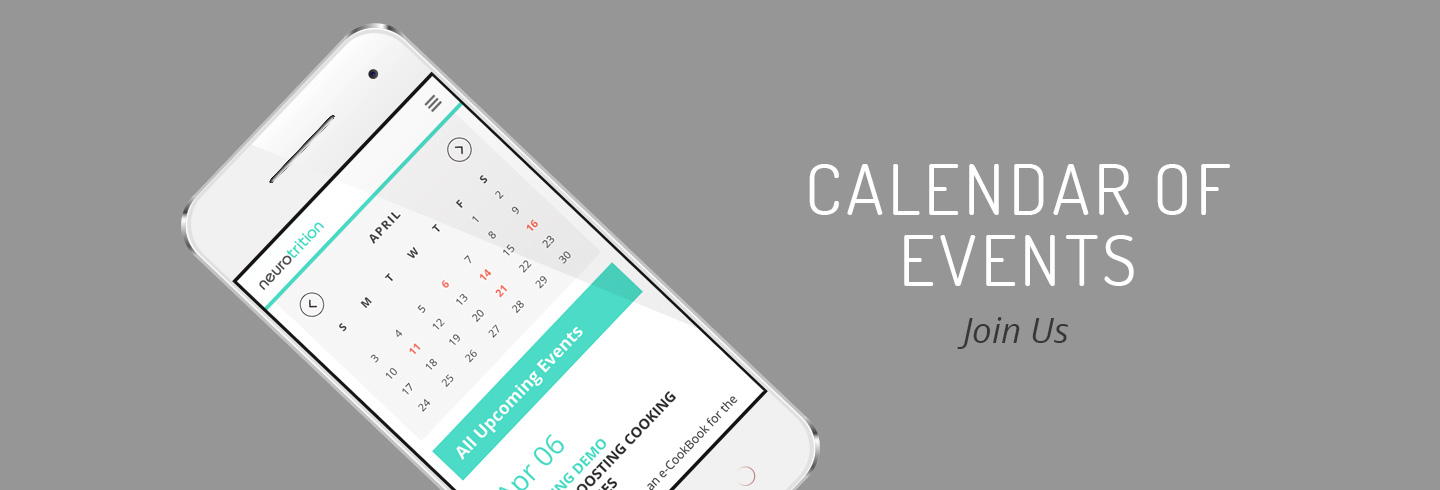Going Keto :: What The Science Is Saying & 3 Safe Ways To Do It

If you’ve been listening to the “health waves” (or “brain waves”) lately, you may be familiar with the “keto” or ketogenic diet.
You may have heard, probably most prominently among other things, that it can help with epilepsy.
The keto diet has helped many children reduce the number and frequency of epileptic seizures.
And this is true! The keto diet has helped many children reduce the number and frequency of epileptic seizures. Some of our trusted colleagues in paediatric neurology, in fact, are using this type of diet with their little patients. Dr. Jong Rho, a paediatric neurologist at the Alberta Childrens Hospital located in Calgary, also runs a research lab and has written several great review papers on the ketogenic diet for epilepsy and autism.
But, using the keto diet for epilepsy isn't recommended for everyone.
As a neuroscience-based nutrition company, we want to give you the goods (the food!), in a way that unpacks what the actual science is saying—and in a way that stays true to the data. Most importantly, we want to offer legitimate and safe information about keto to help you cut through all the conflicting (and sometimes dangerous) information out there. So, let’s dig in, shall we?
WHAT IS THE KETOGENIC DIET?
In a nutshell, “ketogenic” means the ability to GENerate KETOnes. Ketones are a type of compound your brain can then use for fuel.
Your main food types are carbohydrates, fats, and proteins. By changing the amounts that you ingest of each, you change the fuel your body has to work with. Your body’s preferred fuel (and your brain’s preferred fuel for that matter, as its cells can’t live too long without it) is carbs, however, it can switch to using fats (or even proteins, if needed as a last resort).
Ketones are a natural product resulting from some biochemical reactions of fats. And, by eating foods that increase the number of ketones you make (like eating more fat), you can create a “ketogenic diet.”
The “classic” keto diet is eating about 90% of your calories from fat, and just 10% from carbohydrates and proteins.
The “classic” keto diet is eating about 90% of your calories from fat, and just 10% from carbohydrates and proteins. Because these guidelines restrict many nutrient-dense foods, the keto diet often includes vitamin and mineral supplements. So, there are things you should consider before going ahead with a keto diet.
KETONES AND YOUR BRAIN
Your brain’s favourite fuel is glucose/sugar (i.e. carbohydrates), so you need to eat some sugar. BUT. Sugar is not just from “added sugar.” Glucose comes from eating most fruits, vegetables, and starchy plants (e.g. sweet potato). Your body sends the sugar through your bloodstream to fuel your brain and muscles.
Because your brain is kind of a really big deal, it can use a “backup” fuel when sugar is running low. That backup fuel is ketones.
Historically, when people fasted, some of them felt more alert, better able to concentrate, and had better moods. Even some of them with epilepsy experienced fewer seizures.
And tah-dah (drum roll, please) this is how the research on the ketogenic diet began.
Scientists discovered, when their blood sugar was low, people’s bodies started making ketones as fuel.
Basically, the keto diet is a way of eating that mimics fasting, without actually having to fast.
FUN FACTOID: The idea of using fasting for epilepsy started in 1921. The first study of ketosis for seizures was published in 1930.
Research has found that ketosis can be neuroprotective (protecting critical brain and nerve cells)... It can [also] help to “calm” brain activity by affecting neurotransmitters (biochemicals that help nerve cells communicate).
Since then, research has found that ketosis can be neuroprotective (protecting critical brain and nerve cells). For example, it reduces inflammation and oxidation. It can help to “calm” brain activity by affecting neurotransmitters (biochemicals that help nerve cells communicate). It can also increase the energy available for nerve cells. We don’t yet quite know HOW ketosis is neuroprotective, but we know that ketones are brain-friendly compounds. And we know that, somehow, this type of diet is helping little one’s, who otherwise are seizing all day long, to live a happy, healthy, functional life.
KETOGENIC DIET AND EPILEPSY
Epilepsy involves brain seizures due to abnormal electrical discharges of the brain, and I spent my entire undergraduate years working in a lab that studied epilepsy. It occurs in up to 1% of people, and can result from injury, infection, genetic mutation, or other factors. Common treatment includes surgery or medicine, however, one-third of people eventually become resistant to these medications (and they cause massive weight gain among other metabolic problems). The drugs simply stop working, as well. For those people, and people who may not be able to have surgery, the keto diet may be their best option.
In fact, studies show that after a few months of eating a keto diet, the number of seizures can be reduced in half. This is amazing news.
Ketogenic diets can also help some epilepsy medications work better. Bonus!
In fact, for a strict keto diet, even the small amounts of sugars and starches in medications and supplements must be monitored.
Epilepsy is also often found alongside autism spectrum disorder (ASD).
Epilepsy is also often found alongside autism spectrum disorder (ASD). ASD includes reduced ability to communicate and socialize, and increased repetitive behaviours. A few small studies have looked at whether the keto diet can affect ASD. They found that more than half of the children showed improved cognition (ability to think), and a reduction in autistic behaviours.
So, there is definitely evidence that the ketogenic diet has helped many children with epilepsy, and growing evidence is suggesting that it may even help with autism.
RISKS OF KETOGENIC DIETS
The ketogenic diet may be effective for epilepsy in many children, and may help autism, but it’s not for everyone. We like to always err on the side of caution, and communicate any and all risks associated with anything we talk about (and especially with something that is becoming as trendy as “going keto”). So, I want you to know that there are many metabolic conditions that can be worsened by a keto diet. These are:
- primary carnitine deficiency
- carnitine palmitoyl transferase deficiencies
- carnitine translocase deficiency
- beta-oxidation defects
- pyruvate carboxylase deficiency
- acyl dehydrogenase deficiency
- hydroxyacyl-coenzyme A deficiency
- porphyria
The most common side effect of the keto diet is constipation (14-46% of people). Some of the other side effects can include:
- Lethargy
- Metabolic abnormalities (e.g. dehydration, hypoglycemia, excessive ketosis, metabolic acidosis, and electrolyte imbalance)
- Gastrointestinal side effects (e.g. nausea, vomiting, and rarely hepatitis or pancreatitis)
- Kidney stones
- Growth failure, and vitamin/mineral deficiencies and their outcomes (including low bone density and increased fractures)
- Heart and blood fat issues (e.g. cholesterol, etc.). Interestingly, these blood fat issues seem to return to normal after people stop the keto diet
Children who are prescribed the keto diet for their seizures should be closely monitored. The specific amounts of fats, carbohydrates and proteins can be adjusted to maximize seizure control, while minimizing side effects.
“GOING KETO,” A LA NEUROTRITION RX
Everyone these days seems to be talking about keto, and I am getting asked about it on a regular basis (hence the inspiration for this blog, thank you people!). While I’m very excited by the science looking at its efficacy (ability to work, and help people) with respect to paediatric epilepsy and autism, I have yet to see research showing that it healthy for just anyone. It is not without risks because it is restrictive, and it can result in metabolic symptoms, gastrointestinal issues, as well as nutritional deficiencies, to name a few. Because I’m a scientist at heart, as much as I sometimes want to jump on this cool keto bandwagon, I just can’t. Yet. But I’m happy to offer a few safe ways to show your body and brain some serious ketogenic love.
Other than the “classic” keto diet which is 90% fat, there are three other ways to get into “ketosis.” What makes these attractive over the classic keto diet is that they allow more carbohydrates and proteins, and have less risks. All of these diets are thought to have similar benefits for epilepsy, and I feel more comfortable recommending them to our clients at NeuroTrition. These are:
- Medium-chain triglyceride diet (MCTD): which includes the special fats found in coconut oil, and targets 73% calories from fat
- Modified Atkins diet (MAD): which targets 65% of the calories from fat (I know, you’re going “Atkins, isn’t that bad?!” Hate to tell ya, but the ketogenic diet is kind of the new Atkins)
- Low glycemic index diet (LGID): which only targets 60% fat, because the “low glycemic” carbohydrates don't affect the blood sugar very much
The #1 thing I recommend when someone approaches me about “going keto” (other than someone who is asking for their child with epilepsy or autism), and what I think you should do too if you want to try this out, is a Paleo, or paleolithic type, diet first (but a properly done one, don’t get me started on how badly this is being done out there!). This diet starts to limit carbs, while increasing fat and protein, and many clients love it and respond really well to it. If you love Paleo, and it works for you, then I suggest gradually transitioning into one of the three stricter approaches above.
- References
-
- Auvin, S. (2016). Non-pharmacological medical treatment in pediatric epilepsies. Rev Neurol (Paris). 172(3):182-5. doi: 10.1016/j.neurol.2015.12.009.
- Cheng, N., Rho, J.M. & Masino, S.A. (2017). Metabolic Dysfunction Underlying Autism Spectrum Disorder and Potential Treatment Approaches. Front Mol Neurosci. 10:34. doi: 10.3389/fnmol.2017.00034.
- Clanton, R.M., Wu, G., Akabani, G. & Aramayo, R. (2017). Control of seizures by ketogenic diet-induced modulation of metabolic pathways. Amino Acids. 49(1):1-20. doi: 10.1007/s00726-016-2336-7.
- Martin, K., Jackson, C.F., Levy, R.G. & Cooper, P.N. (2016). Ketogenic and other dietary treatments for epilepsy. Cochrane.
- Kelley, S.A. & Kossoff, E.H. (2016). How effective is the ketogenic diet for electrical status epilepticus of sleep? Epilepsy Res. 127:339-343. doi: 10.1016/j.eplepsyres.2016.09.018.
- Luat, A.F., Coyle, L. & Kamat, D. (2016). The Ketogenic Diet: A Practical Guide for Pediatricians. Pediatr Ann. 45(12):e446-e450. doi: 10.3928/19382359-20161109-01.
- Rho, J.M. (2017). How does the ketogenic diet induce anti-seizure effects? Neurosci Lett. 10;637:4-10. doi: 10.1016/j.neulet.2015.07.034.
- Schoeler, N.E. & Cross, J.H. (2016). Ketogenic dietary therapies in adults with epilepsy: a practical guide. Pract Neurol. 16(3):208-14. doi: 10.1136/practneurol-2015-001288.
- Ułamek-Kozioł, M., Pluta, R., Bogucka-Kocka, A. & Czuczwar, S.J. (2016). To treat or not to treat drug-refractory epilepsy by the ketogenic diet? That is the question. Ann Agric Environ Med. 23(4):533-536. doi: 10.5604/12321966.1226841.










